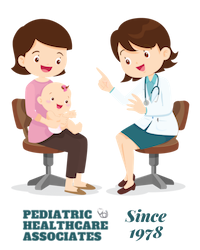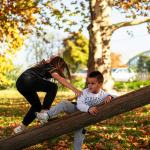Autumn Bugs in Kids: Prevention and Care
Why fall raises risk
When the weather cools and school is back in swing, children spend more time indoors, share supplies, and gather in tighter spaces. These conditions help respiratory droplets and contaminated surfaces spread viruses and bacteria efficiently. Dry air also irritates nasal passages, making it easier for germs to take hold. For the youngest, healthcare for infants matters because their immune systems are still developing, and they can dehydrate or fatigue faster when sick. For older kids, having responsive healthcare pediatric guidance lowers stress, clarifies what to watch for, and reduces unnecessary school absences.
What kids catch
The biggest culprits when leaves change color are familiar but disruptive:
- Common cold viruses (rhinoviruses, enteroviruses) that cause runny noses, coughs, and sore throats.
- Influenza, which can bring fever, body aches, chills, cough, and fatigue.
- RSV, often mild for older kids but potentially serious for infants and toddlers.
- Strep throat, a bacterial infection that tends to cluster in classrooms and activities.
- Seasonal allergies that inflame airways and set the stage for sinus and ear infections.
Because symptoms overlap, families often need clarity on whether to rest at home or seek an in‑person evaluation. A quick pediatric appointment can differentiate look‑alike illnesses, confirm a diagnosis, and guide the safest treatment.
Symptoms to watch
- Fever that climbs or persists longer than three days
- Fast or labored breathing, wheezing, or chest retractions
- Severe sore throat, painful swallowing, or a fine red rash
- Ear pain, tugging at ears, or new balance issues
- Dehydration signs: dry mouth, fewer wet diapers, dark urine, lethargy
- Persistent cough beyond 10–14 days, or cough that worsens instead of improving
If you observe these, schedule a pediatric appointment and share a clear timeline of symptoms and any known exposures.
Prevention that works
- Keep vaccines current. Flu shots reduce severity and spread, and eligible children benefit from updated immunizations.
- Wash hands often, especially after school, practice, and playdates. Teach kids to lather for 20 seconds.
- Ventilate indoor spaces. Open windows or use air purifiers during gatherings.
- Send tissues and hand sanitizer in backpacks and sports bags.
- Encourage cough etiquette: into elbows, not hands.
- Keep sick children home for at least 24 hours after fever resolves without fever reducers.
- Support rest, hydration, and balanced nutrition to bolster immunity.
Home care essentials
- Offer small, frequent fluids. For infants, continue breastmilk or formula; check hydration closely.
- Use age‑appropriate acetaminophen or ibuprofen for fever and discomfort, following dosing guidance.
- Run a cool‑mist humidifier to ease congestion and cough.
- Try saline nasal drops and gentle suction for little noses.
- Avoid over‑the‑counter cough and cold medicines in young children unless directed.
When to seek care
Contact a pediatric physician promptly for breathing difficulties, dehydration, high fevers that do not respond to medication, severe sore throat with fever, ear pain, or if an infant under three months has any fever. Practices that offer same day sick appointments and acute care pediatrics make it easier to get timely relief and reduce complications.
Support for families
Families benefit from coordinated medical pediatrics teams who know a child’s history and seasonal patterns. If you’re comparing associates in pediatrics or pediatrics health associates in your area, ask about:
- Evening or weekend hours during peak fall surges
- Rapid flu and strep testing on‑site
- Access for pa pediatric families across multiple locations
- Clear guidance for school notes and return‑to‑play timelines
Proactive planning before the season—booking a pediatric appointment for vaccine updates, refilling inhalers, and reviewing action plans—can make the difference between a week of sniffles and a cascade of missed school and work.
Getting ready for the season
Set a family plan for illness: who alerts school, where the thermometer lives, and which comfort foods your child prefers. Keep a small supply of fever reducers, saline, a humidifier filter, and oral rehydration solution on hand. With the right tools, your family can move through fall’s germ waves with confidence and care.







